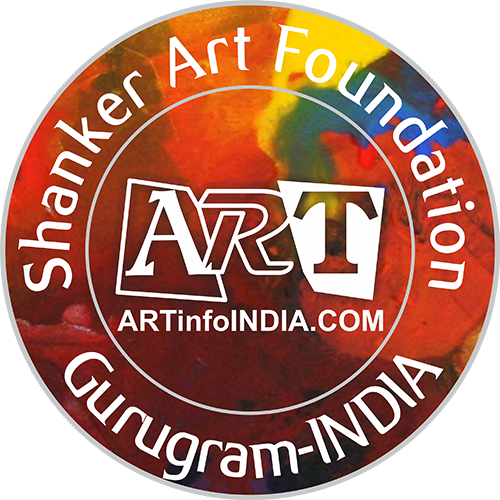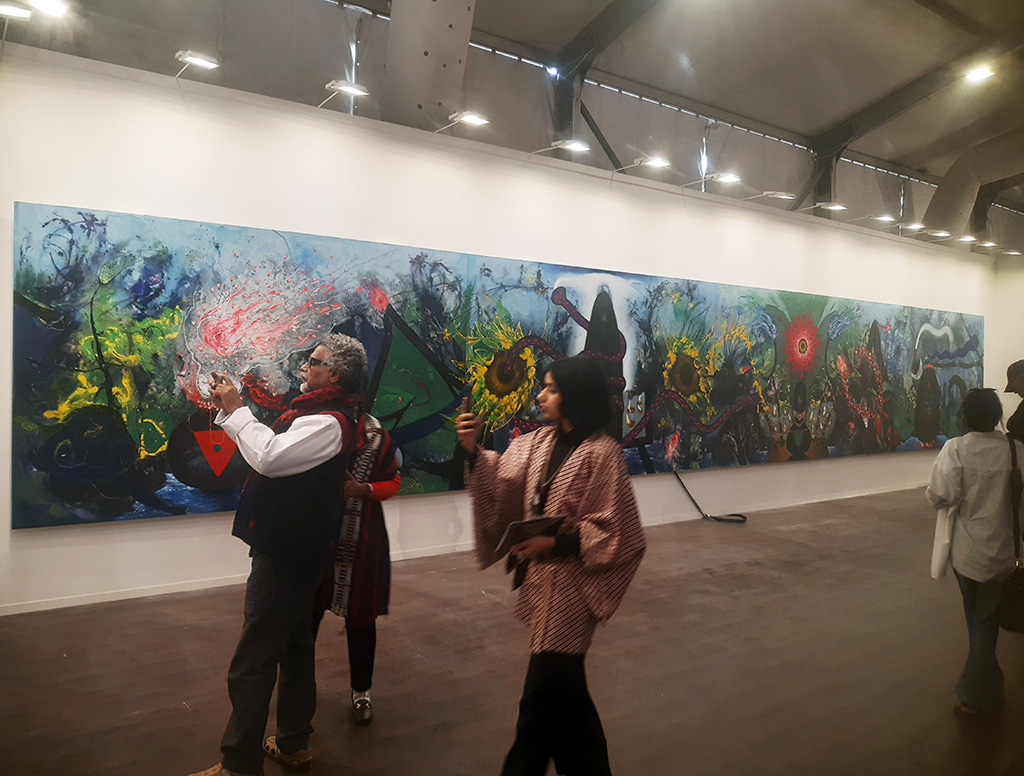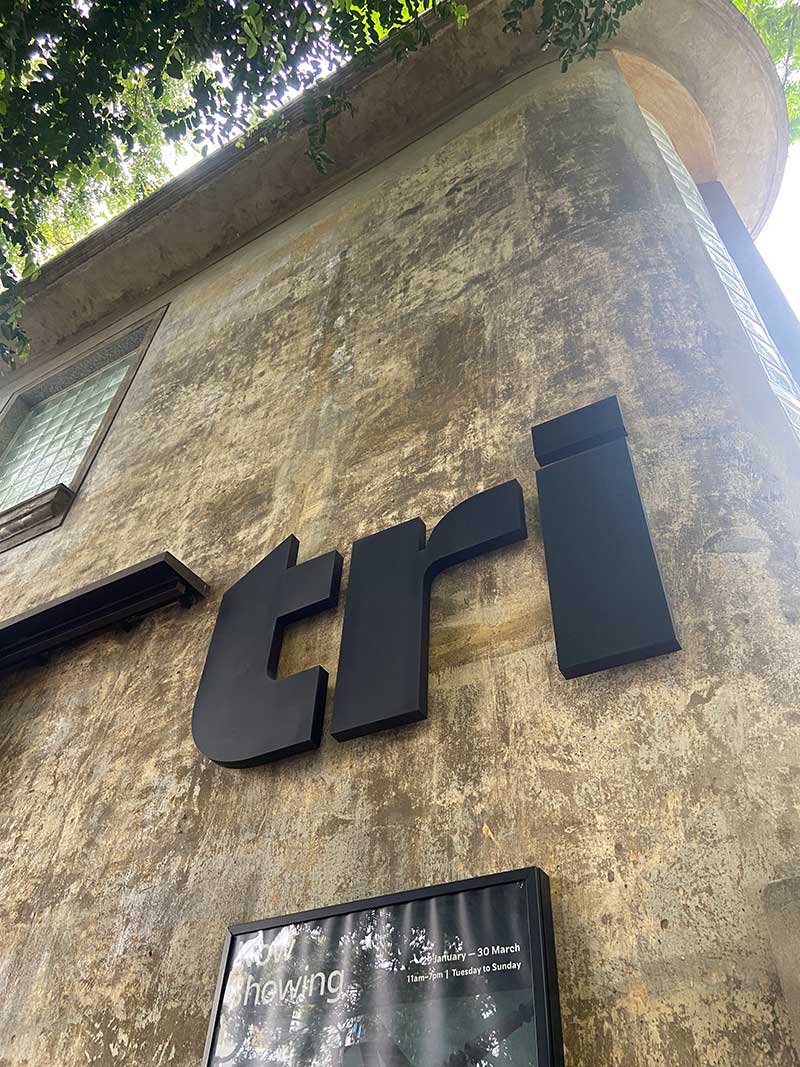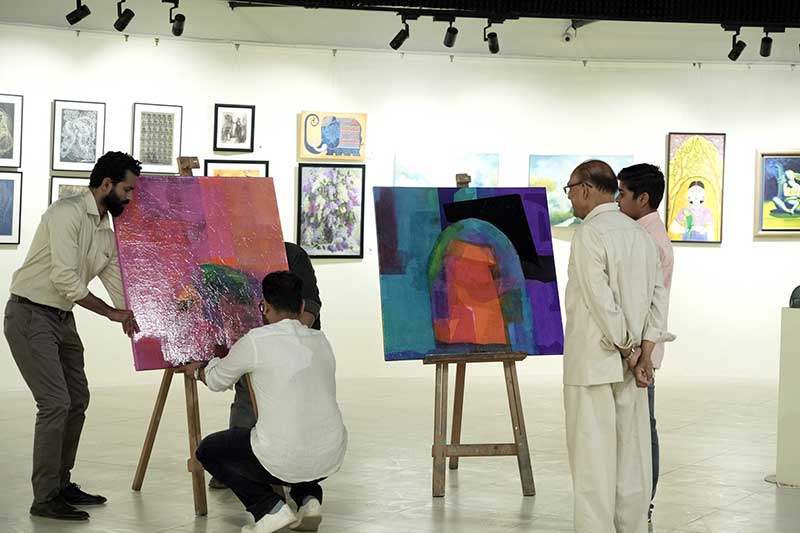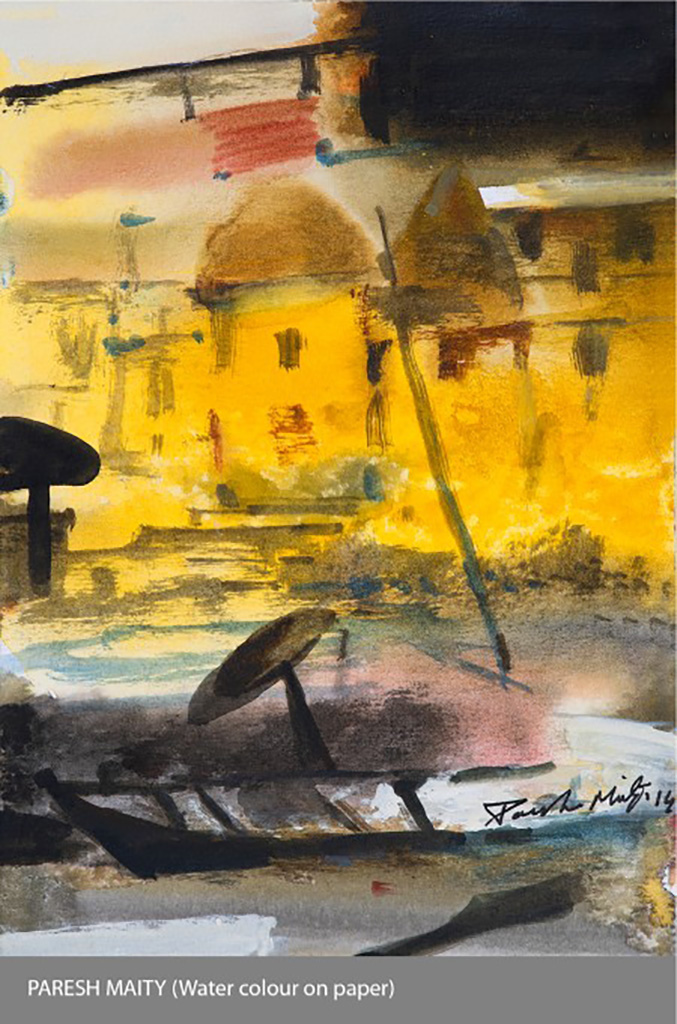“Art enables us to find ourselves and lose ourselves at the same time.” – Thomas Merton
For sixteen years, the India Art Fair has been a cornerstone of South Asia’s cultural landscape, championing modern and contemporary art with unparalleled vision. This year, from February 6 to 9, 2025, the fair returned to the NSIC Exhibition Grounds in Okhla, New Delhi, presenting its most expansive edition yet.
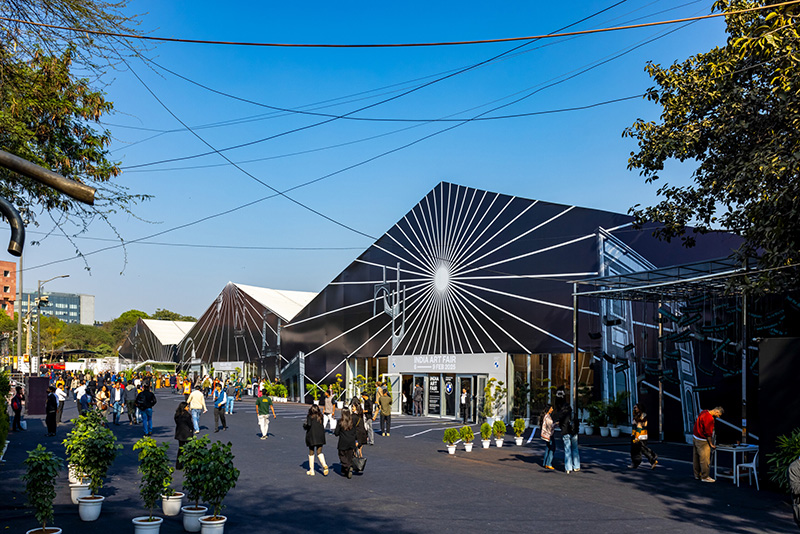
Since its inception in 2008 at Pragati Maidan, New Delhi, where it debuted as the India Art Summit, the India Art Fair (IAF) has undergone a remarkable evolution. Conceived by Neha Kirpal, the inaugural event featured 34 galleries and approximately 550 contemporary and modern artworks, serving both as a trade platform and a space for public engagement with artists. Over the years, IAF has transformed into a dynamic art market hub, fostering networking, sales, and exposure for artists and galleries. Attracting a diverse audience—including collectors, curators, and art enthusiasts—it has firmly established itself as a premier venue for contemporary art transactions and critical discourse.
It is intriguing to reflect on how the concept of art fairs began as a humble idea in 1967, when contemporary art dealer Rudolf Zwirner, in collaboration with Cologne gallerist Hein Stünke, sought to revitalize a stagnant art market affected by war and social conditions. Together, they established the first official contemporary art fair—Kölner Kunstmarkt, now known as Art Cologne. Initially limited to German galleries and a select audience, the artfair maintained exclusivity by having dealers chosen by a panel—a practice still followed in many art fairs today. These early limitations eventually paved the way for the creation of other prominent art fairs, most notably Art Basel.
What began as a modest idea and a small initiative, driven by passion and perseverance, gradually flourished into a global tradition that continues to unite generations through the transformative power of art. Inspired by the success of Art Cologne and Art Basel, several contemporary art fairs emerged in 1974, including FIAC in Paris and Arte Fiera in Bologna. Over the decades, this movement expanded worldwide, giving rise to prestigious fairs such as Frieze, Art Mumbai- a more recent one and India Art Fair. Today, these events serve as essential platforms within the global art market, fostering connections among artists, galleries, collectors, and art enthusiasts while shaping contemporary artistic discourse.
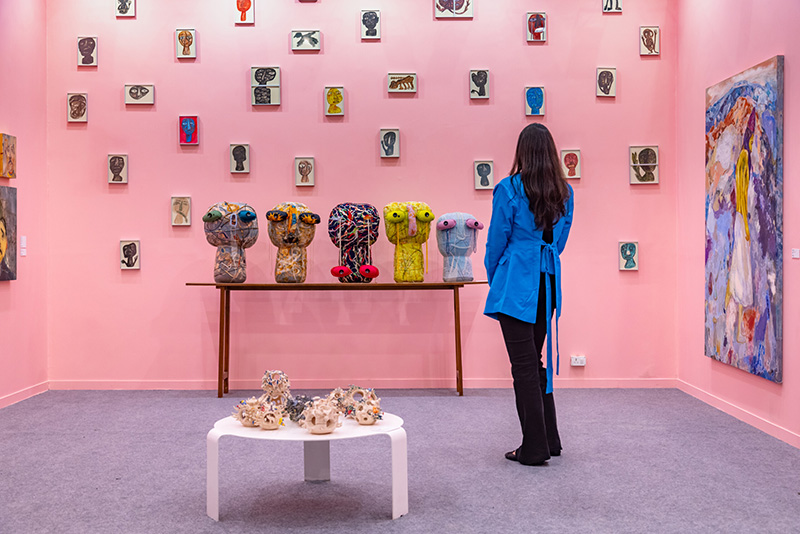
In words of Jaya Asokan, fair director, IAF 2025
“How does an art scene come to life?
It comes from the ground up—through collaboration, friendship, and community…”
Jaya passionately shares that the India Art Fair is a vibrant celebration of collaboration, creativity, and artistic growth, emphasizing how a thriving art scene is rooted in community and shared creativity—principles that shape contemporary South Asian art. She highlights that in South Asia, artists have long drawn from shared histories, global influences, and new mediums to continuously craft meaningful expressions of contemporary narratives. As South Asian art gains global recognition through major museum exhibitions, biennales, and record-breaking sales, the India Art Fair remains at the heart of this movement, fostering connections and shaping the future of art in the region.
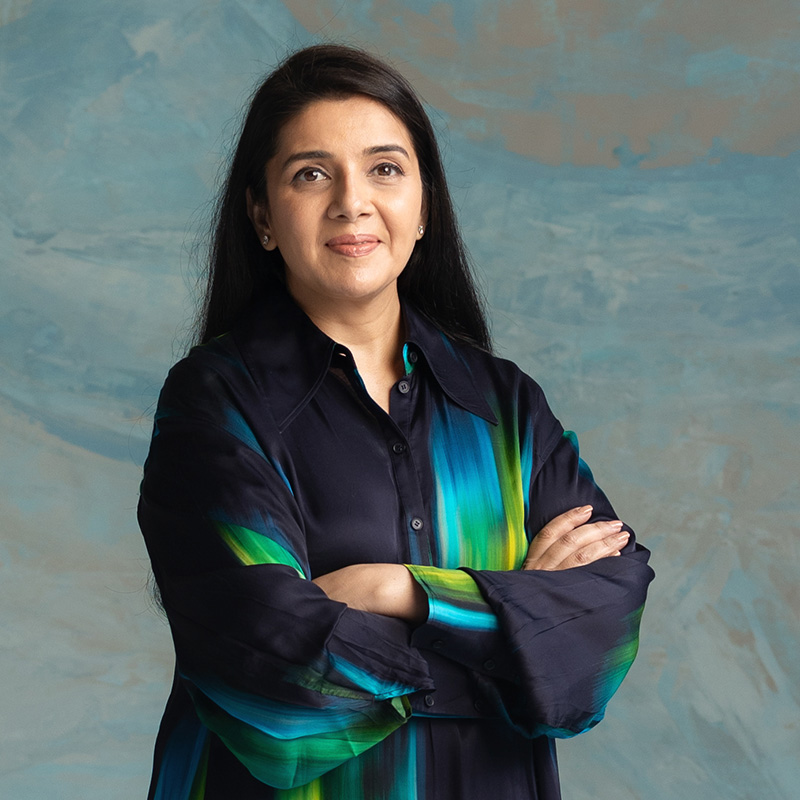
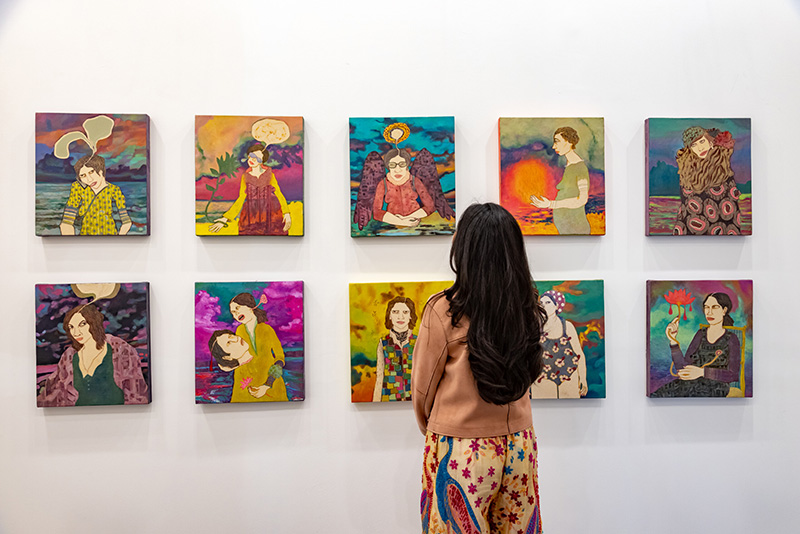
Beyond its annual presence in Delhi, India Art Fair has played a crucial role in strengthening South Asia’s art ecosystem. Through collector weekends in cities like Chennai and Kolkata, gallery weekends, and cultural festivals, the fair extends artistic engagement far beyond the capital. Committed to nurturing talent, it supports artist prizes, fellowships, and an artist-in-residence program, many of whose participants have gone on to exhibit in leading galleries worldwide. Additionally, its editorial platform serves as a vital resource, offering rare insights into South Asian contemporary art and artists.
India Art Fair 2025 indeed reaffirmed the transformative power of art, celebrating creativity, connection, and cultural evolution on a global stage. This year’s edition offered an extraordinary line-up of programs. The four-day fair unfolded as a vibrant celebration of modern and contemporary art from South Asia and beyond, weaving together a rich tapestry of programs and events that captivated and inspired. With over 118 exhibitors, including 78 galleries and 11 design studios, the fair presented a stunning array of artworks, showcasing the creative brilliance of both emerging and established artists. Special commissions and large-scale installations, including an exclusive collaboration with BMW Group India, offered immersive, thought-provoking experiences. Engaging discussions and thought-leadership talks brought together visionaries from the art world, while live performances, interactive workshops, and guided art tours provided visitors with a deeper, hands-on connection to the works on display. These diverse and dynamic programs underscored the fair’s unwavering commitment to innovation, inclusivity, and intercultural dialogue, solidifying its role as a cornerstone of South Asia’s cultural landscape.
Just as a few threads hint at the richness of a tapestry, here are some key details that offer a glimpse into the vibrant participants and events that shaped the India Art Fair 2025.
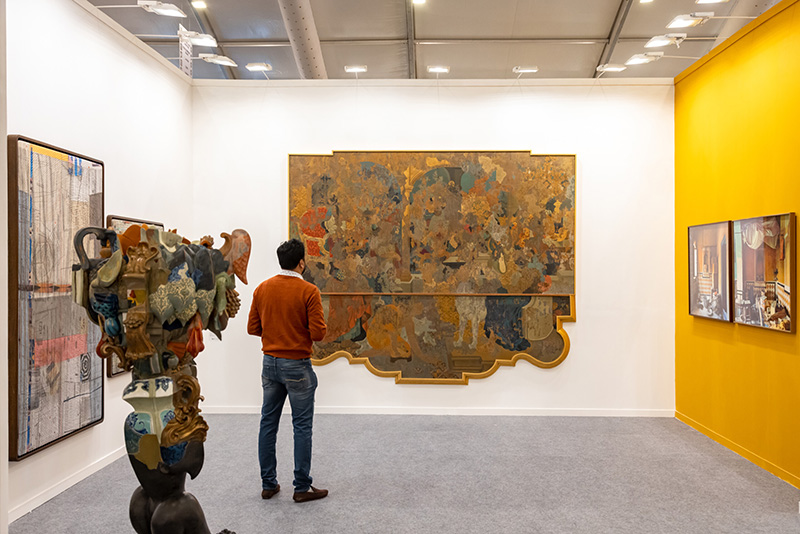
To start with, is the mention of diverse assembly of Galleries and Artists which underscored the fair’s commitment to celebrating both established and emerging talents, solidifying its role as a pivotal event in the global art calendar. Several prominent Indian galleries participated, showcasing a diverse range of modern and contemporary South Asian art. New Delhi’s Vadehra Art Gallery presented a solo exhibition by Shilpa Gupta. Threshold Art Gallery featured “Lost in Translation,” a group exhibition exploring the complexities of language through various artistic practices. Gallerie Nvya, also from New Delhi, hosted “Contemplations in GRACE,” highlighting the contributions of women artists across generations. Gurgaon-based Art Incept showcased “What You See,” a group show examining the impact of photography on visual art perception. These galleries, along with many others, contributed to the fair’s rich and dynamic art showcase. Esteemed galleries such as Crayon Art Gallery, Delhi Art Gallery, and Dhoomimal Gallery apart from displaying contemporary masterpieces, also paid homage to the nation’s artistic heritage, presenting works by modern masters that evoked a sense of nostalgia and reverence.
Renowned figures such as M. F. Husain, S.H. Raza, A. Ramachandran, and Sakti Burman were prominently featured, underscoring their enduring influence on India’s art landscape. Contemporary artists also made a significant impact. Chemould CoLab highlighted works by Gurjeet Singh, Aiza Ahmed, and Jayeeta Chatterjee, offering fresh perspectives in modern art. Emami Art presented pieces by Arpita Akhanda, whose art delves into themes of migration and identity, reflecting her family’s Bangladeshi heritage. Additionally, galleries like Aicon and Archer Art Gallery displayed works by 20th-century artists, including Thota Vaikuntam and Jyoti Bhatt, highlighting the rich tapestry of India’s artistic heritage.
International galleries made a significant impact as well. Lisson Gallery returned to the fair after over a decade, presenting works by renowned artists such as Anish Kapoor, Shirazeh Houshiary, Marina Abramović, Ai Weiwei, and Hiroshi Sugimoto. David Zwirner showcased new and recent works by Huma Bhabha and Oscar Murillo, alongside pieces by Paul Klee, Yayoi Kusama, and Dan Flavin. Galleria Continua featured contemporary icons, bringing an inspiring roster of artworks by Ai Weiwei, Loris Cecchini, Subodh Gupta and more.
This confluence of established and emerging artists, both local and international, solidified the India Art Fair 2025’s role as a pivotal event in the global art calendar.

Immersive Outdoor Projects and Installations transformed the fairgrounds into a dynamic, thought-provoking space. These large-scale installations explored themes of identity, ecology, and resilience, inviting visitors to step beyond traditional galleries and engage with powerful visual narratives that bridged cultures, histories, and contemporary concerns.
Among the standout works at India Art Fair 2025 was Claire Fontaine’s Foreigners Everywhere, a multilingual neon installation exploring migration and belonging, curated by Andrea Anastasio and supported by the Italian Embassy Cultural Centre. Equally compelling, liactuallee’s Transmutations—crafted from discarded materials—evoked the Nilgiri Hills, emphasizing ecological renewal and sustainability. Mohd. Intiyaz’s Dar-Badar 2.0, supported by METHOD and the Living Waters Museum, reimagined childhood memories of water scarcity, confronting viewers with pressing environmental justice issues.
These Immersive Outdoor Projects transcended conventional exhibition spaces, offering powerful, multi-sensory experiences that engaged with migration, sustainability, and resilience—sparking critical dialogue on contemporary global challenges.
Other Installations like those of Ashwini Bhat, in collaboration with the Asian Art Museum and IAF, presented ‘Earth Under Our Feet’, an ephemeral clay installation explored themes of interconnectedness and impermanence. Vibha Galhotra’s Orbis Unum – II wove national flags into a single emblem of unity, challenging notions of nationalism and belonging. Bhushan’s Fragments of an Astronomer’s Mind transformed celestial observations into intricate artistic expressions. Social critique was deeply embedded in works like Yogesh Barve’s I Am Not Your Dalit, which used LED tickers to expose the persistence of caste inequalities. Umesh S.’s My Village is Going Abandon mourned the loss of indigenous agricultural knowledge, reminding viewers of a fading way of life. In contrast, Deborah Fischer’s The Whisperers 2024, created with Jodhpur weaver Dinesh Solanki, celebrated intergenerational wisdom through traditional craft, a quiet testament to heritage and continuity.
These thought-provoking works did more than push artistic boundaries—they ignited essential conversations about history, materiality, and social change. At a time when art must do more than decorate, the fair stood as a testament to its power to question, confront, and transform.
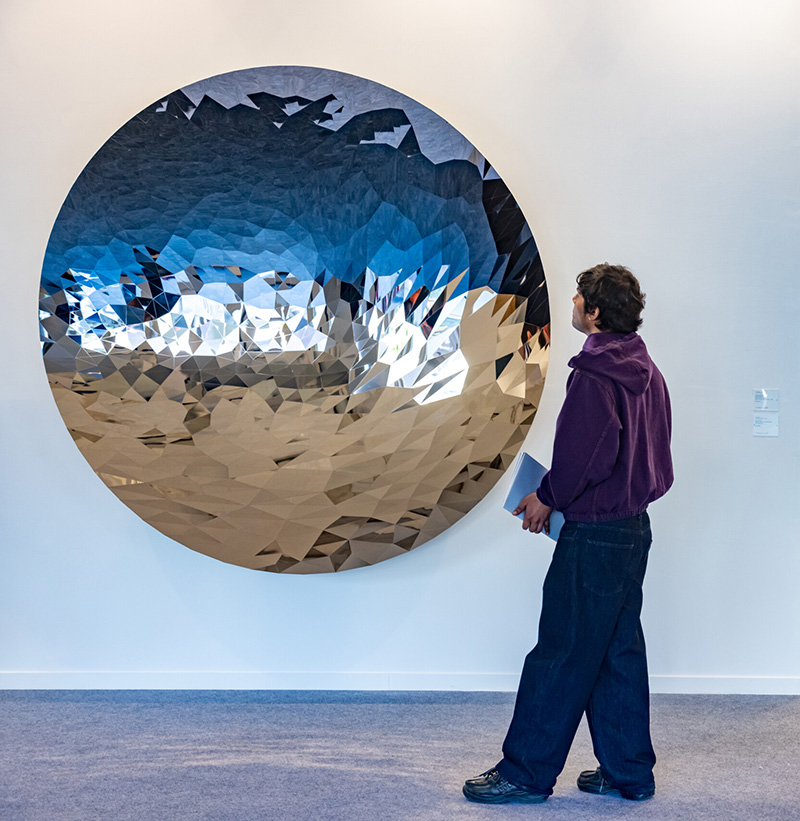
In-Residence Programmes by India Art Fair 2025 served as dynamic incubators for bold, emerging talent, celebrating artistic ingenuity across diverse media. This year, the fair introduced the Designer-in-Residence initiative in collaboration with Raw Mango, offering visionary designers a platform to redefine creative expression. Among the standout projects, Imon Phukan’s The Forest That I Return To, developed with the Royal College of Art, London, intricately woven themes of migration, identity, and womanhood through layered textiles. Liactuallee’s Transmutations breathed new life into discarded materials through crochet, reimagining waste as a vessel for ecological storytelling, while Umesh S.’s My Village is Going Abandon mourned the erosion of agricultural wisdom, etching Bhojpuri verses onto farming tools as an ode to vanishing traditions. Through these residencies, the fair nurtured artistic evolution, fostering a space where boundaries dissolve, disciplines converge, and meaningful, thought-provoking narratives emerge.
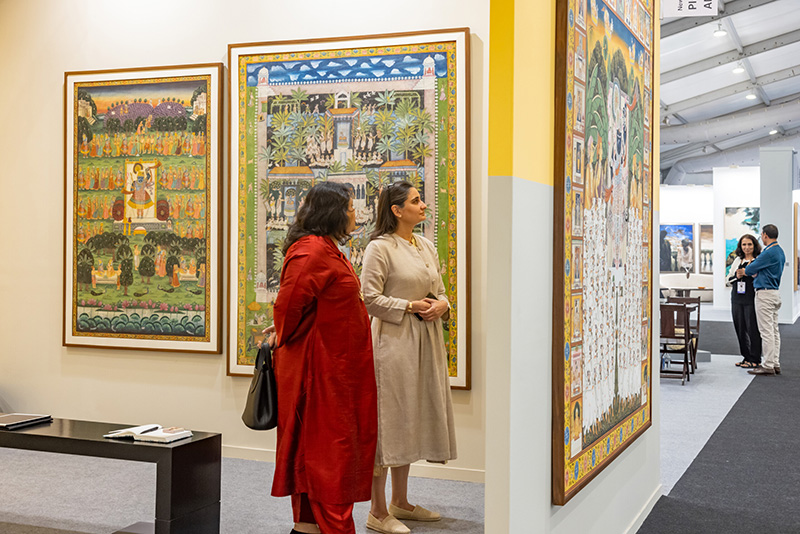
Art in Motion was another major attraction during this art fair. The Embassy of Switzerland in India, in collaboration with the Kiran Nadar Museum of Art (KNMA), presented “Wiping Out,” a thought-provoking performance by Swiss artist Karoline Schreiber, produced by Katharina Weikl, Head of Art x Science at the University of Zurich. In this live performance, Schreiber used a broom and black sand to draw and erase images of extinct animal species, reflecting on humanity’s destructive impact on biodiversity. The ephemeral nature of the artwork, with drawings appearing and disappearing in painterly motion reminiscent of early cave paintings, emphasized the silent disappearance of these animals and served as a poignant reminder of our responsibility towards the environment.
Powerful performances like Daubing My Own Land by Umesh S. shed light on the struggles of landless indigenous communities striving to cultivate their own trees.
India Art Fair 2025 was more than a showcase of stunning displays—it was a living, breathing space where art engaged directly with identity, history, and transformation. Through immersive installations and performances, the artists blurred the lines between past and present, the personal and the political, the material and the ephemeral.
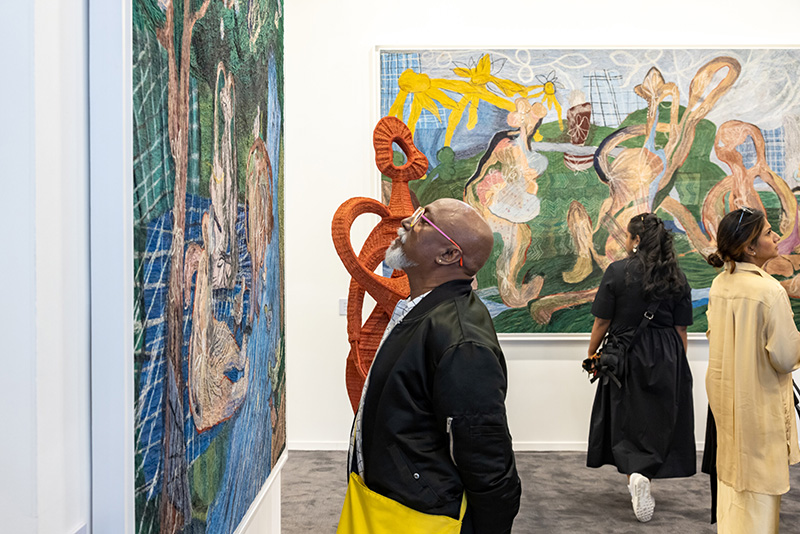
Workshops offered an engaging space for creativity and artistic exploration, adding to the fair’s allure. These palette playgrounds captivated learners, offering them a space to explore, experiment, and rediscover artistic expression. The “Rediscovery” workshop series, curated by LAND and supported by KNMA, provided a hands-on, intimate space for artistic exploration. Notable sessions included “Kurinuki: Japanese-Inspired Pottery,” where potter Manu Randhawa guided participants in embracing imperfection through this meditative technique, and “Bad Drawings,” led by Priya Chauhan, which challenged conventional artistic standards, encouraging free expression over technical precision.
The fair showcased a Fusion of Art, Fashion and Film, including “The Panorama Beyond the Color Line” by Mumbai’s Strangers House, which explored radical materialism, and “Indigenous Fashion Futures: A Living Archive,” curated by Sreyansi Singh, celebrating contemporary indigenous textile traditions. Cinema took center stage with YCP’s curated film salon, in collaboration with MUBI and the Emami Art Experimental Film Festival, redefining storytelling through experimental filmmaking.
By fostering creativity, dialogue, and cultural exchange, India Art Fair 2025 ensured visitors left not just as spectators, but as active participants in the evolving landscape of contemporary art.
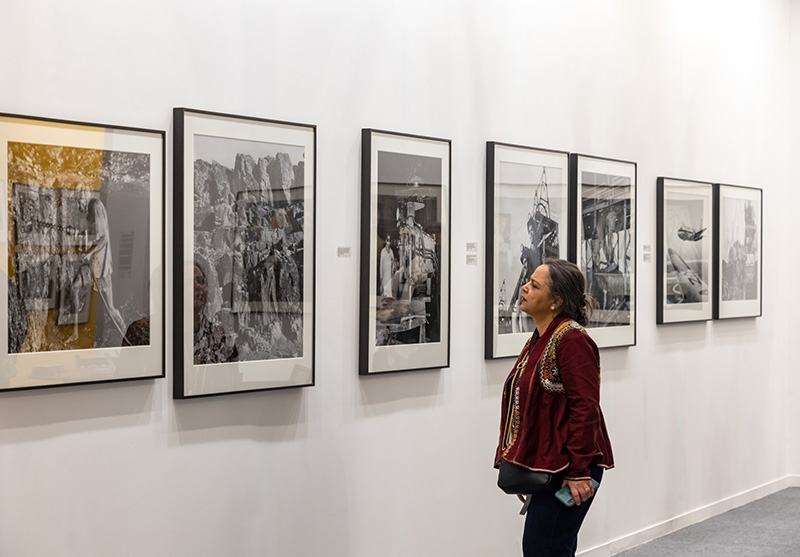
The Inclusion Lab at the India Art Fair 2025 provided a welcoming and accessible space for inclusive art workshops, embracing children with disabilities, adults with diverse needs, and anyone interested in art as a form of therapy and expression. Programmed by Access for ALL and supported by the Kiran Nadar Museum of Art (KNMA), the Lab hosted engaging activities conducted in Hindi, English, and Indian Sign Language by facilitators Siddhant Shah, Rohan Marathe, and Karishma Das. Highlights included workshops like Mandala Mosaic Morning, where participants crafted intricate mandalas, BYOT: Bring Your Own Tote Bag, encouraging sustainable creativity, and Community Canvas, a collaborative art experience. Additionally, a Sensory Art Rest Corner provided a calming retreat amidst the fair’s vibrancy. These initiatives reinforced the fair’s dedication to inclusivity, making art accessible and enjoyable for all.
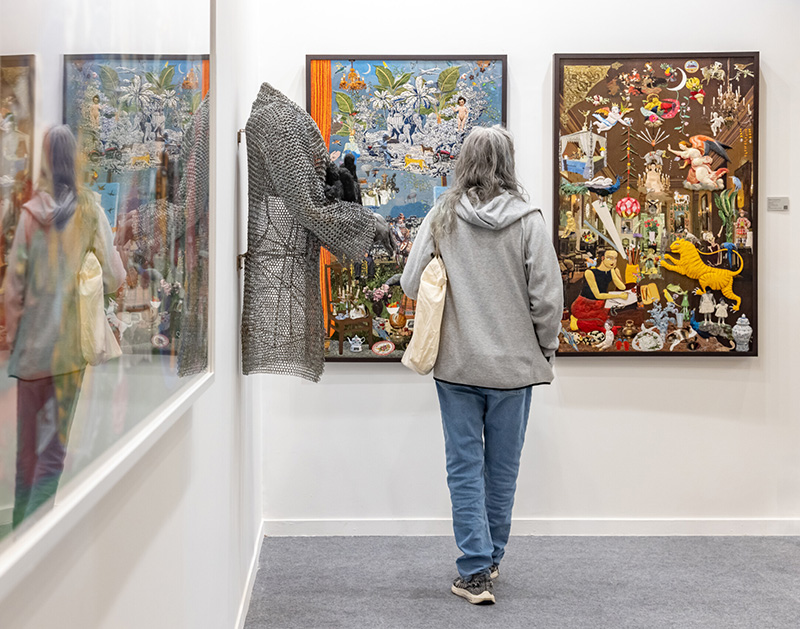
The Guided Public Art Tours brought art to life through insight, context, and dialogue. These guided tours, curated in collaboration with Shaleen Wadhwana, offered visitors a thoughtfully woven journey through modern and contemporary South Asian art. These tours provided an immersive experience, allowing attendees to engage deeply with the artworks, understand artistic narratives, and explore diverse themes shaping the region’s creative landscape. Led by expert guides, they fostered meaningful conversations, making the fair not just a showcase of art but a dynamic space for learning and discovery.
Designed for enthusiasts of all levels, these tours transformed the fair into an interactive space where history, innovation, and emerging voices converged. Each tour provided a distinct perspective—”Design and Us” explored the intersection of art and design, “30 Under 30 Ultra Contemporary” spotlighted the next generation of artists, “Highlights @ IAF 2025 | The BMW Art Tour” presented the fair’s most compelling exhibits, and “The Deep Dive | 1925–2025” traced a century of artistic evolution.
Through these guided experiences, visitors didn’t just observe art—they engaged with its stories, contexts, and future possibilities.
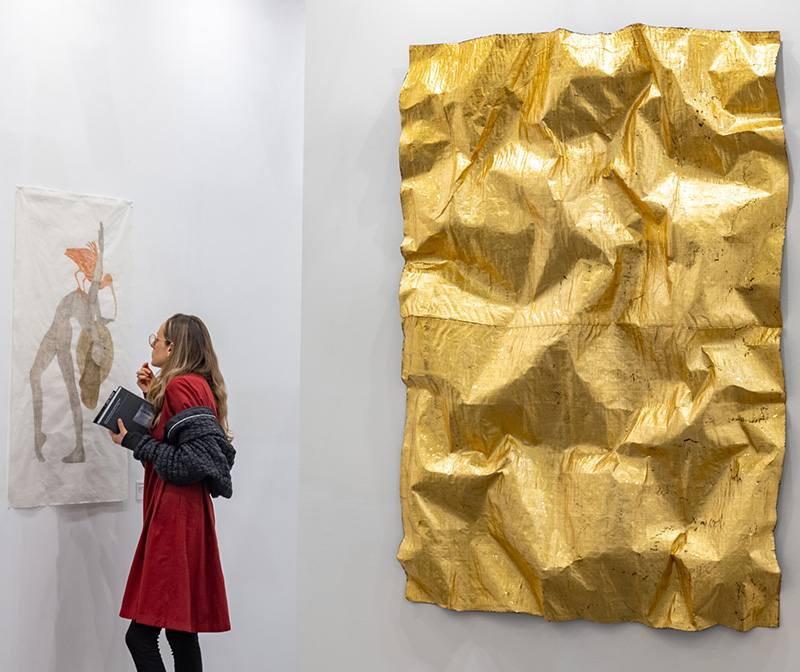
The Talk Series enriched the fair with insightful conversations, fostering deeper engagement and meaningful dialogue within the art community. The BMW Art Talk, From Introspection to Impact: Artists Shaping the World, took place on February 7, 2025. Moderated by Prof. Dr. Thomas Girst, Head of Cultural Engagement at BMW Group, the discussion brought together renowned artists Shirazeh Houshiary, Bharti Kher, and Pushpamala N. to explore how art transcends barriers, fosters connections, and offers new perspectives in an increasingly divided world. In this talk, Shirazeh Houshiary, known for her abstract sculptures and paintings, explored themes of existence and perception, seamlessly blending Eastern and Western artistic traditions. Bharti Kher discussed her diverse body of work, encompassing sculptures and installations that challenged cultural and social norms while integrating traditional Indian motifs to address contemporary issues. Pushpamala N. reflected on her practice as a leading photo and video performance artist, using satire and irony to critique historical narratives and representations of women in Indian culture.
The conversation provided profound insights into the artists’ creative processes and the broader impact of art on society, leaving the audience with a deeper appreciation of its transformative power.
To mention a few more, the Growing Focus Talks Series curated by Shaleen Wadhwana and supported by JSW, explored South Asia’s expanding influence in contemporary art, design, and culture; Engaging discussions featured The Design Aesthetic, with Rajiv Saini, Tarini Jindal Handa, and Loïc Le Gaillard, moderated by Megha Kapoor; Patrons of Tomorrow brought together Nupur Dalmia, Jaiveer Johal, Samyukta Nair, and Akshita Bhanj Deo, moderated by Dr. Padma Dorje Maitland.
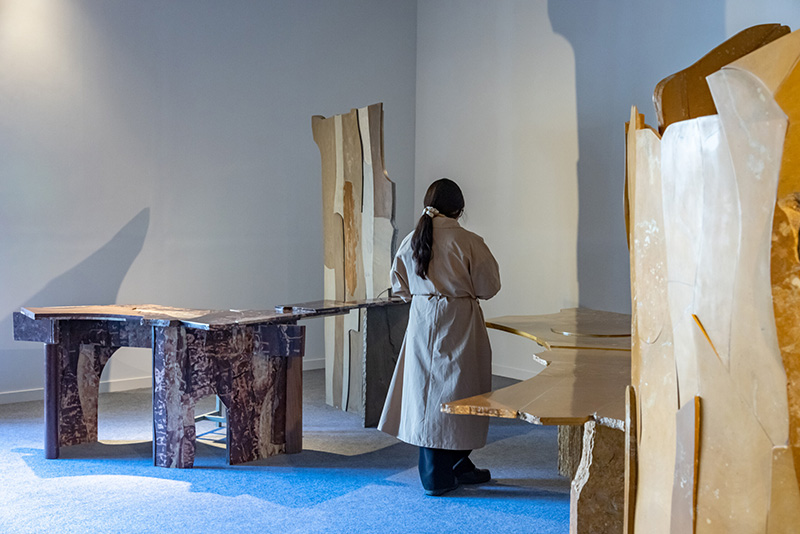
Another key session, The Present and Future of Curating: Voices from Around the World, featured Zasha Colah, Tarini Malik, Yina Jiménez Suriel, Prabhakar Kamble, and Joyoti Roy, while Shifting Narratives Beyond the Eurocentric Lens brought together Sangita Jindal, Emiko Usui, Kamini Sawhney, and Manuel Rabaté, moderated by Dr. Cleo Roberts-Komireddi. The talks emphasized how artists and institutions from South Asia are reclaiming space in the global art world, highlighting the contributions of the People of the Global Majority—who, rather than responding to colonial histories, are shaping new cultural narratives on their own terms.
Other key conversations included Artistic Careers: Building Sustainability, where Jiten Thukral & Sumir Tagra, Tarini Sethi, Amrit Pal Singh, and Zeenat Kulavoor addressed balancing creative passion with financial stability, and Museums as Incubators, featuring global museum leaders discussing how institutions are fostering artistic experimentation. Public Programming: DNA of Cultural Institutions highlighted strategies for accessibility and engagement, while Platforming Grassroots showcased community-led initiatives reshaping India’s artistic landscape, with live translations in Hindi, Tamil, and Bengali ensuring inclusivity.
Sessions like Today’s Global Majority tackled shifting global narratives beyond Eurocentric perspectives, and The Evolution of the Multifaceted Art Gallery in India explored how galleries are transforming into cultural hubs. Through these thought-provoking discussions, India Art Fair 2025 reinforced its role as a catalyst for dialogue, collaboration, and a more inclusive artistic future.
Insightful discussions also explored the evolving landscape of art, education, and cultural institutions. Arts Pedagogy and the Curriculum for the Future examined how art education is being decolonized to reflect diverse perspectives on identity, caste, class, gender, and regional narratives. Moderated by Abhay Sardesai, the panel featured Dr. Padmini Ray Murray, Prof. Sarover Zaidi, Anurag Minus Verma, and Jasmine Wahi, who shared expertise on digital ethics, religious architecture, media, and intersectional feminism.
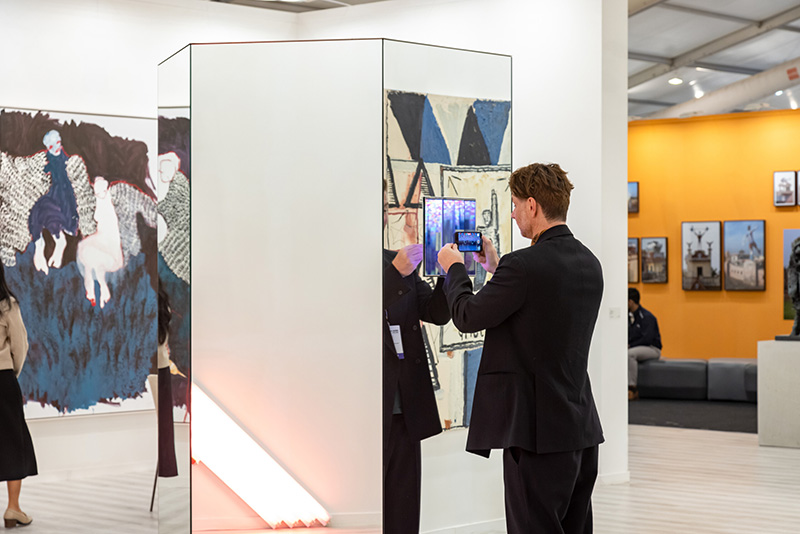
Each speaker offered a unique perspective—ranging from digital ethics and religious architecture to socio-political commentary and intersectional feminism—highlighting the need for art education to move beyond traditional frameworks. The conversation underscored the necessity of integrating marginalized voices and interdisciplinary approaches into arts pedagogy, challenging the dominance of STEM fields in India’s education system. By advocating for a more holistic and socially engaged model of art education, the panel reinforced the idea that art is more than an aesthetic pursuit—it is a vehicle for knowledge, resistance, and transformation, shaping a more inclusive and dynamic global art ecosystem.
Arts Pedagogy and Curriculum for the Future is indeed a subject that needs to be nurtured and emphasized. Art education in India is undergoing a crucial transformation, with educators striving to decolonize curricula and integrate diverse perspectives on age, caste, class, religion, gender, sexuality, and region. By fostering inclusivity and representation, they are shaping a more equitable and reflective artistic landscape. Art has always been a powerful tool for storytelling, identity formation, and social change. It allows individuals to critique, reimagine, and reconstruct narratives that shape cultural and national consciousness. As India cements its place in the global art scene, a well-structured arts education becomes essential in nurturing the next generation of artists, curators, and cultural leaders.
At the same time, arts pedagogy must evolve beyond mere technique and historical appreciation, to emphasize interdisciplinary learning, critical thinking, and community engagement. In a rapidly changing world, where digital and multimedia art forms are gaining prominence, the curriculum must adapt to incorporate new technologies, experimental methodologies, and collaborative practices. Moreover, accessibility remains a key challenge. Arts education should not be confined to elite institutions but should reach underrepresented communities, ensuring that talent is nurtured across socio-economic barriers. Ultimately, the role of arts pedagogy is not just to produce skilled artists but to cultivate a society that values creativity, empathy, and cultural literacy. A future-focused curriculum will empower individuals to engage meaningfully with their heritage, question dominant narratives, and contribute to a dynamic, inclusive, and globally connected artistic ecosystem.
Public art initiatives, scholarships, and grassroots-level programs can play a pivotal role in democratizing artistic expression. …and this is where fairs like the India Art Fair hold a vital place.
Building on its dynamic showcase of creativity and collaboration, the legacy of India Art Fair extends beyond the canvas, shaping a visionary future for art. India art fair 2025 was more than a celebration of art—it was a living testament to the ever-evolving cultural landscape of South Asia. It brought together tradition and innovation, offering a space where artistic legacies met contemporary experimentation. Beyond the artworks, it was the conversations, collaborations, and shared moments of discovery that defined the fair’s significance. It became a bridge between past and future, honouring heritage while pushing the boundaries of artistic thought. By uniting artists, collectors, and audiences in a vibrant exchange, the fair reaffirmed that art is not just a reflection of society but a force that shapes it- one brushstroke, one installation, one idea at a time.
